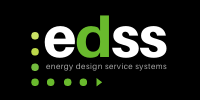Leed Commissioning
The Leadership in Energy and Environmental Design (LEED®) program is a consensus-based Green Building rating system, developed by the United States Green Building Council (USGBC), an independent not-for-profit organization. The rating system quantifies various building elements and compares them to a standard of efficiency, providing a tangible level of building performance.
LEED® is the recognized standard in the U.S. and many other countries for building sustainability. The program is based around performance in the design and construction of buildings in the following five areas of environmental concern:
- Sustainable sites
- Water efficiency
- Energy and atmosphere
- Materials and resources
- Indoor environmental quality
Benefits of LEED® Certification
The participation of an organization in the LEED® certification process shows its dedication and leadership in ecological preservation and social responsibility. Some of the environmental and financial benefits LEED® certified projects may enjoy are:
- Increased productivity of occupants
- Energy reduction leading to lower operating costs
- Increased asset value
- Reduced construction waste and emissions
- Tax credits and other incentives in hundreds of cities
- Public interest in your project
The LEED® Commissioning Process
A formal commissioning process is required to assure that building components are designed and installed as intended. There are five steps to this formal process:
- Engage a LEED® commissioning authority
- Review design intent and basis of design documentation
- Include commissioning requirements in construction documentation
- Develop and employ a commissioning plan
- Verify the installation, functional employment, training on systems and documentation
How does your building rate?
Request information about LEED® Certification from Energy Design Service Systems.
